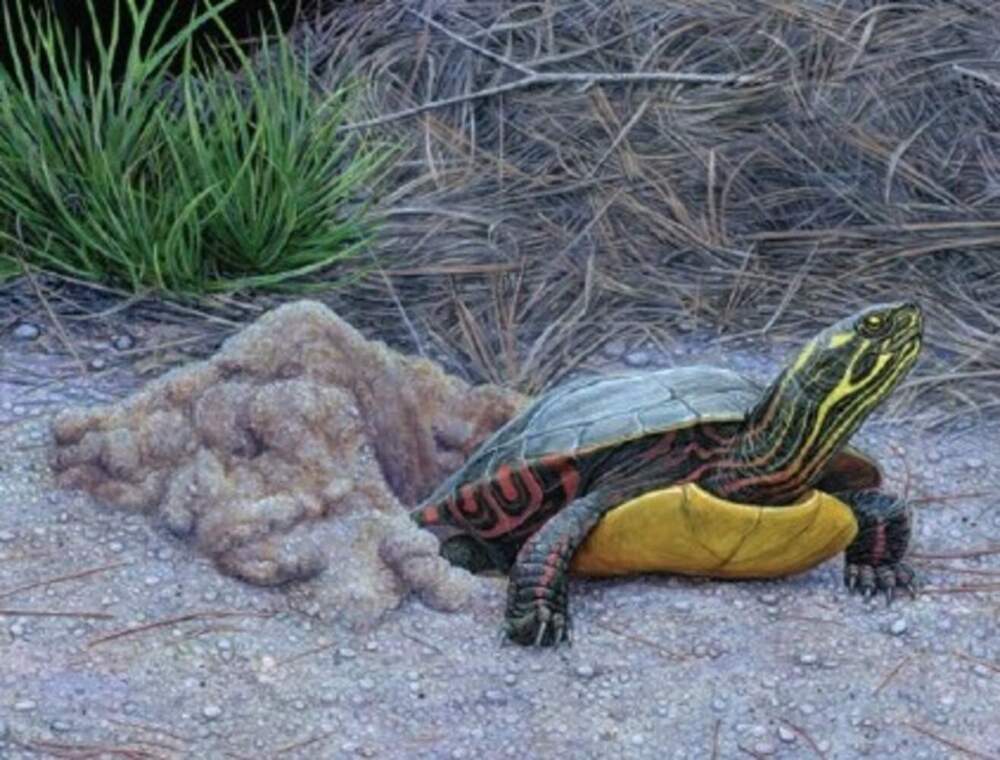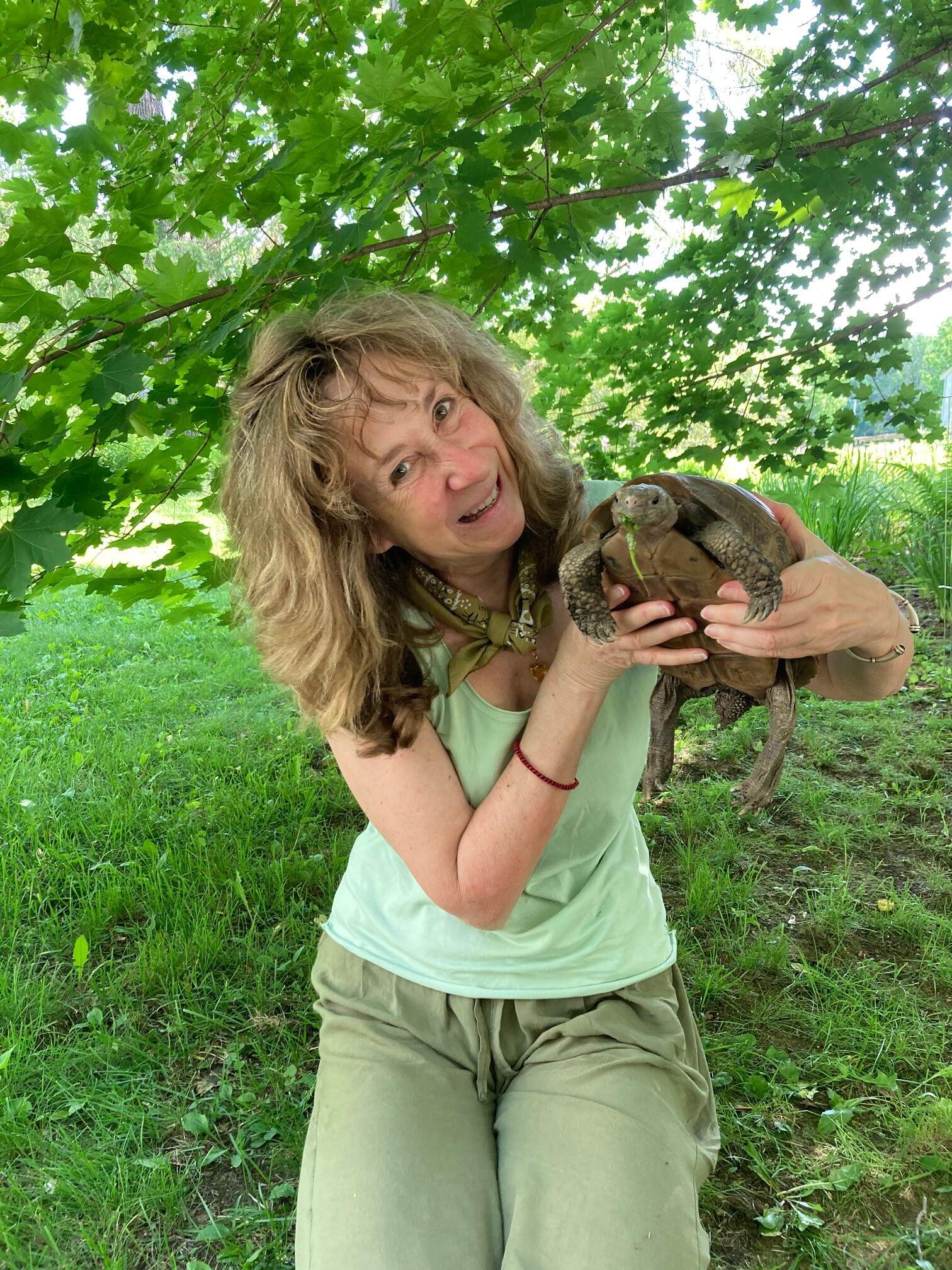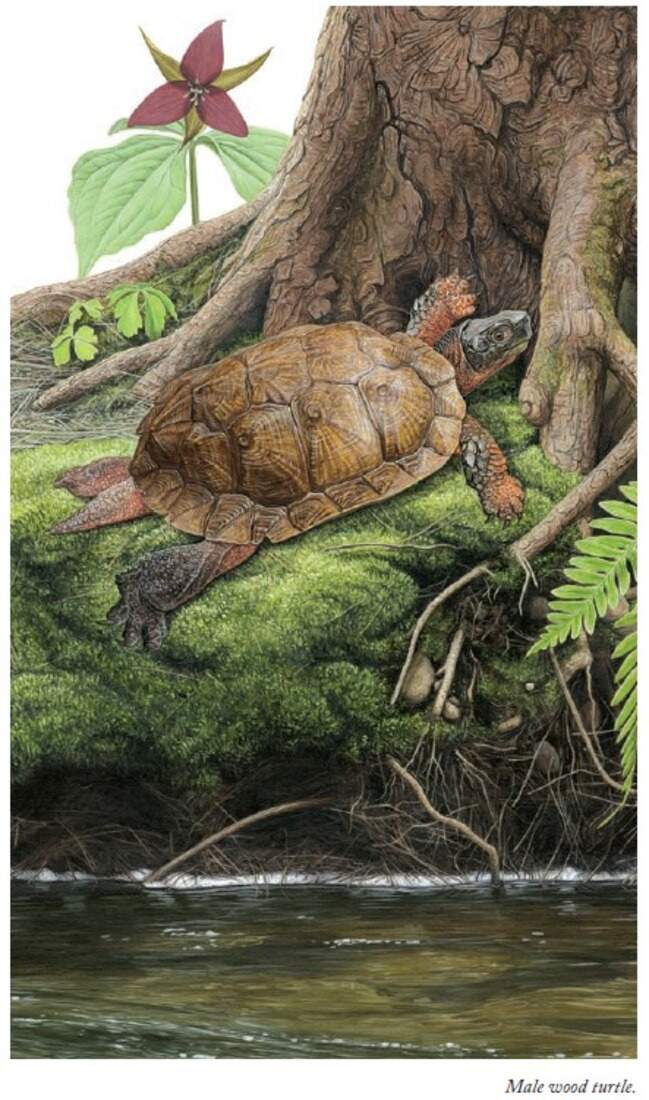Advertisement
In 'Of Time and Turtles,' best-selling author Sy Montgomery dives deep into turtle rescue
Resume
Cracked shells, eyes swollen shut, and broken bones are all injuries suffered by turtles at the Turtle Rescue League, namely inflicted by moving vehicles on roads near turtle habitats.

In writing her new book, “Of Time and Turtles: Mending the World Shell by Shattered Shell,” author Sy Montgomery visited the turtle sanctuary with illustrator Matt Patterson. Montgomery says she appreciates the work the Rescue League does for the fascinating, wise creators.
“When I turned 60, just five years ago, I became more interested than ever in the philosophical question of time, because now I was an elder. And whenever I go on any kind of investigation or exploration, I need to have an animal guide. And who better than turtles,” Montgomery says. “When a turtle looks into your face, it is an intense concentration. You just feel like you're being blasted with this wonderful focus.”
When Turtle Rescue League founders Alexxia Bell and Natasha Nowick noticed how dangerous it was for turtles to cross busy roads, they started their turtle preservation efforts by helping the famously slow creatures cross streets safely. But upon witnessing the mass amount of injuries still sustained by turtles, they opened the Rescue League, which includes operating rooms to nurse injured turtles back to health and hatch turtle eggs to return to nature.
If you happen to see an injured turtle in the road, Montgomery says the best course of action is to bring it to a professional turtle rehabber or call a dedicated turtle hospital or turtle ambulance where trained volunteers will assist in rescuing the animal. Montgomery offers a list of resources for a situation like this in her book, and the Turtle Rescue League provides resources as well.
“Here is a sentient, feeling being who loves his or her life, just like we love ours,” Montgomery says. “When we save someone in trouble — whether they are a person, or a turtle, or a dog, or a cat, or a chimp — we're saving our own relatives. We're saving our world.”

Book excerpt: 'Of Time and Turtles'
By Sy Montgomery
Amid all the other homes on the suburban street—white, beige, gray, pale blue, light yellow—this two-story saltbox stands out. It’s a blazing neon green, its flamboyance accentuated by an equally elec- trifying violet shed out back. The house bears a sign in front that reads, TURTLE LOVER PARKING ONLY. VIOLATORS BETTER SHUT THE SHELL UP.
Parked in the drive are a white Smart car and a black Scion. Both are mounted with strobe lights—like the ambulances they are. Emblazoned with the Turtle Rescue League logo, and with stickers urging fellow motorists, STOP FOR TURTLES IN THE ROAD—HELP THEM GET ACROSS, the cars serve as emergency vehicles for transporting injured turtles to the thousand-square-foot turtle hospital that occupies the basement of the home.
Observed by closed-circuit TV—one of several security measures taken because even sick or injured, turtles are so valuable on the black market that the patients here could be targets of abduction—my friend, the wildlife artist Matt Patterson, and I mount the steps to the wooden deck and knock on the door. Alexxia Bell, Turtle Rescue League’s president, lets us in. She’s forty-six, slender, tall, and seems dressed for a party, wearing a black nylon long-sleeved shoulderless shirt and slim pale-blue velvet jeans. Once inside, Matt and I carefully step over a knee-high wooden barricade to enter the living room.

We are soon met with the reason for the barricade. Pizza Man, a twenty-year-old, twelve-pound red-footed tortoise, with a knobby black-and-yellow shell, is headed toward us like a slow-motion missile. High-stepping on columnar legs, his toenails tapping softly on the wooden floor, he holds his pale-yellow bottom shell, or plastron, tall as he paces determinedly across the room. He stops two inches from my feet. He pointedly jerks his wizened-looking head to the right, holds it still for a second, jerks his head back to the center, then jerks it to the left. He then swings his neck back to center and stares up into my face.
Such a spirited reaction from a turtle might come as a surprise. While most people like turtles, many, even biologists, for years dismissed the reptiles’ intellect as little more sophisticated than a pet rock’s. Compared with their sometimes colossal bodies (a leather- back sea turtle who washed up on a Welsh beach holds the record, at nine feet long, weighing over a ton), turtles’ brains are remarkably small, which was believed a sign of low intelligence. “Turtles don’t need intelligence,” one field biologist, Alex Netherton, asserted in an online forum, “so they do not waste energy on it.” Because turtles are famously slow, and spend considerable amounts of time stock-still, it’s easy to get the impression they don’t think or feel or know much—or do much of anything at all.
But clearly, Pizza Man is giving me a signal. It feels like a welcome.
“This turtle really loves attention,” Alexxia explains. I bend down to stroke his soft, outstretched neck and head, admiring the red patches on his cheeks and nose and around his soulful, dark eyes. Then Pizza Man marches on to meet Matt. If anything, Pizza Man’s ardor now grows. Even though it’s February in New England, Matt, as usual, is wearing—along with his signature turtle-print headband—flip-flops, and Pizza Man makes a point of standing directly on the warm tops of Matt’s feet as he performs his greeting.
Pizza Man’s enthusiastic reception bodes well for us. Matt, already a renowned natural history artist at thirty-eight, and I have driven two hours from our homes in New Hampshire here to Southbridge, Massachusetts, to ask a favor. Since the previous summer, when we started helping friends protect a nesting site for five species of New England turtles, we’ve been drawn deeper and deeper into the world of these beloved but little-understood reptiles. Last year, we attended a turtle summit, a symposium for turtle rehabilitators, here at the League. We came away as stunned as if we’d visited Lourdes.
Alexxia had projected a slide of one of their patients, a female snapping turtle. The entire first third of her shell was shattered, three of her legs were smashed, one eye was gone; she had been lying on the side of the asphalt road where she’d been hit, cooking in the sun, for hours. But two years later, she was returned to the wild, healed. “What looks like a fatal injury to some animals may be survivable to a turtle,” Alexxia had told the assembled crowd. “Basically, if the turtle’s organs are not smeared all over the road, you might well be able to save her. We never give up on a turtle.”
So today, we are back. We want to take part in this miracle. We’ve come asking if, once the busy spring season gets underway, we might be allowed to volunteer at the League’s hospital, and help broken creatures be made whole.
Excerpted from "Of Time and Turtles: Mending the World, Shell by Shattered Shell" © 2023 by Sy Montgomery with illustrations by Matt Patterson. Reproduced by permission of Mariner Books, an imprint of HarperCollins Publishers. All rights reserved.
Emiko Tamagawa produced and edited this interview for broadcast with Todd Mundt. Grace Griffin adapted it for the web.
This segment aired on October 10, 2023.

